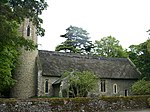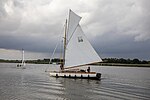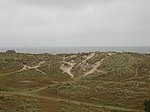Horsey Dunes

Horsey Dunes is an extensive dune system on the east coast of Norfolk, England. It is owned by the National Trust and is within the Norfolk Coast AONB. It is sometimes known as Horsey Gap. To the south is the adjacent SSSI Winterton Dunes - it is possible to walk from one to the other. The site is notable for a large colony of grey seals which breed there each winter. The site, together with the adjoining Winterton Dunes, hosts the largest colonies of dark green fritillary and grayling butterflies in Norfolk. Other butterflies recorded from here in numbers include small copper and common blue.The site has been subject to illegal raves in the past, which have significantly harmed the butterfly population.
Excerpt from the Wikipedia article Horsey Dunes (License: CC BY-SA 3.0, Authors, Images).Horsey Dunes
Horsey Gap, North Norfolk Horsey
Geographical coordinates (GPS) Address Nearby Places Show on map
Geographical coordinates (GPS)
| Latitude | Longitude |
|---|---|
| N 52.7561 ° | E 1.6531 ° |
Address
Horsey Gap
NR29 4EQ North Norfolk, Horsey
England, United Kingdom
Open on Google Maps











